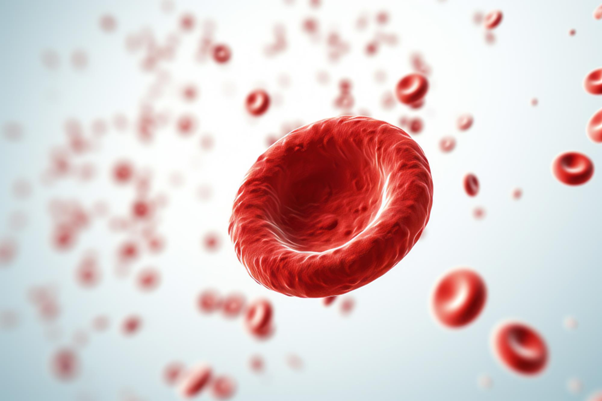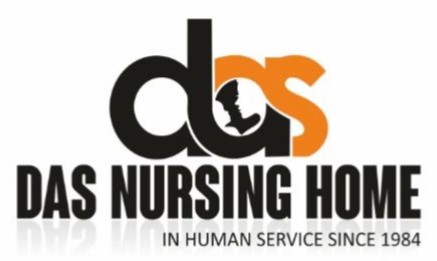Anemia is a common health condition where the body doesn’t have enough healthy red blood cells to carry oxygen to your tissues. This can lead to feelings of fatigue, weakness, and other uncomfortable symptoms. While anemia is treatable, it’s important to identify and manage it early to prevent complications.
What is Anemia?
Anemia occurs when your body doesn’t have enough red blood cells or the red blood cells it does have don’t contain enough hemoglobin. Hemoglobin is a protein in red blood cells that carries oxygen from your lungs to the rest of your body. Without enough oxygen being delivered to your tissues and organs, you may feel tired and weak.
Anemia can be mild or severe, and its causes can range from a simple nutritional deficiency to more complex conditions like chronic disease or inherited disorders. In many cases, anemia can be treated effectively, but it’s important to diagnose it early so that you can begin the right treatment.
Types of Anemia
There are different types of anemia, each with its own cause. Some of the most common types include:
- Iron-Deficiency Anemia
- This is the most common type of anemia. It happens when your body doesn’t have enough iron to make hemoglobin. Iron-deficiency anemia can be caused by poor diet, heavy periods, blood loss, or problems absorbing iron from food.
- Vitamin B12 Deficiency Anemia
- Vitamin B12 is needed to produce red blood cells. If you don’t get enough B12, you may develop anemia. This can happen due to a poor diet, especially if you follow a vegetarian or vegan diet or if your body has trouble absorbing B12.
- Folate Deficiency Anemia
- Folate, or vitamin B9, is also needed to make red blood cells. A lack of folate can lead to anemia. Folate deficiency can be caused by poor nutrition, excessive alcohol use, or pregnancy, which increases the body’s need for folate.
- Chronic Disease Anemia
- Some chronic diseases like kidney disease, cancer, or rheumatoid arthritis can interfere with your body’s ability to produce red blood cells. This type of anemia is common in people with long-term illnesses.
- Aplastic Anemia
- Aplastic anemia is a rare type of anemia where your bone marrow stops making enough red blood cells. It can be caused by an autoimmune disorder, certain medications, or even infections.
- Hemolytic Anemia
- Hemolytic anemia occurs when your red blood cells are destroyed faster than your body can make them. It can be caused by conditions like autoimmune diseases, infections, or reactions to certain medications.
- Sickle Cell Anemia
- Sickle cell anemia is an inherited condition where the red blood cells are shaped like a crescent or sickle. These abnormal cells can block blood flow and cause pain and other complications. It mostly affects people of African, Mediterranean, or Middle Eastern descent.
- Thalassemia
- Thalassemia is a genetic condition where the body produces fewer healthy red blood cells. This can lead to anemia and other health problems.
Causes of Anemia
Anemia can happen for several reasons, depending on the type. Some of the main causes include:
- Nutrient Deficiencies: Not getting enough of key vitamins and minerals, especially iron, B12, and folate, is one of the most common causes of anemia.
- Blood Loss: Losing a lot of blood from heavy periods, injury, surgery, or internal bleeding can reduce the number of red blood cells in your body, leading to anemia.
- Chronic Conditions: Diseases like kidney disease, cancer, or rheumatoid arthritis can interfere with your body’s ability to make red blood cells.
- Inherited Disorders: Some types of anemia, like sickle cell anemia or thalassemia, are inherited and passed down through families.
- Bone Marrow Problems: If your bone marrow isn’t working properly due to conditions like leukemia or aplastic anemia, it may not produce enough red blood cells.
Symptoms of Anemia
The symptoms of anemia can vary depending on how severe the condition is. In some cases, anemia may be mild and cause few symptoms, while in other cases, it can be more serious. Common signs of anemia include:
- Fatigue: Feeling tired all the time, even after a full night’s sleep, is one of the most common symptoms of anemia. This happens because your body isn’t getting enough oxygen.
- Paleness: If you look pale, especially in your face, it might be a sign of anemia.
- Shortness of Breath: You may feel winded or have difficulty breathing, even with light activity, because your body isn’t getting enough oxygen.
- Dizziness: A lack of oxygen can cause dizziness or lightheadedness, particularly when standing up quickly.
- Cold Hands and Feet: Poor circulation caused by anemia can make your extremities feel cold and numb.
- Rapid Heartbeat: Your heart may beat faster or irregularly to try to compensate for the lack of oxygen in your blood.
- Headaches: Frequent headaches can also be a symptom, as your brain isn’t receiving enough oxygen.
- Cravings for Non-Food Items: A condition called pica can develop in people with anemia, causing them to crave non-food items like dirt or ice.
Diagnosing Anemia
If you have symptoms of anemia or suspect you might have it, it’s important to see a healthcare provider. To diagnose anemia, your doctor will likely perform a physical exam and ask about your medical history. Blood tests are essential for confirming the diagnosis and identifying the cause.
Common tests include:
- Complete Blood Count (CBC): This test measures the number of red blood cells, hemoglobin levels, and other important components of your blood.
- Iron Studies: If iron deficiency is suspected, tests can measure how much iron is in your blood.
- Vitamin and Mineral Tests: Blood tests for vitamin B12 and folate can help identify deficiencies that may be causing anemia.
- Bone Marrow Biopsy: In some cases, a bone marrow biopsy might be needed to check for more serious conditions like leukemia or aplastic anemia.
Treatment for Anemia
How anemia is treated depends on its cause. Some of the most common treatments include:
- Iron Supplements: If your anemia is due to iron deficiency, your doctor will likely recommend iron supplements or changes to your diet. Iron-rich foods include red meat, spinach, beans, and fortified cereals.
- Vitamin B12 or Folate Supplements: If you’re low on B12 or folate, your doctor may recommend supplements or changes to your diet to include more foods rich in these nutrients.
- Treating Underlying Conditions: If anemia is caused by a chronic disease, treating the disease may help improve anemia. For example, managing kidney disease or autoimmune conditions can help boost red blood cell production.
- Blood Transfusions: If anemia is severe, especially due to blood loss, a blood transfusion might be needed to restore red blood cell levels.
- Bone Marrow Treatment: In cases of bone marrow disorders like aplastic anemia, treatments like a bone marrow transplant may be necessary.
- Managing Sickle Cell Crises: For people with sickle cell anemia, treatments during painful crises may include pain relief, fluids, and blood transfusions.
Preventing Anemia
While not all types of anemia can be prevented, there are steps you can take to reduce your risk:
- Eat a Balanced Diet: Make sure your diet includes plenty of iron-rich foods like meat, beans, and dark leafy greens. Also, include foods high in vitamin B12 and folate.
- Address Deficiencies Early: If you think you’re not getting enough iron, B12, or folate, talk to your doctor about taking supplements or adjusting your diet.
- Manage Chronic Conditions: If you have a chronic condition that could lead to anemia, like kidney disease, work closely with your healthcare provider to manage it.
- Avoid Blood Loss: If you have heavy periods or other sources of blood loss, talk to your doctor about how to manage it.
Anemia is a condition that can affect your energy levels and overall health, but with the right treatment, it’s manageable. Whether it’s caused by a nutritional deficiency, chronic disease, or an inherited condition, understanding the symptoms and seeking timely treatment is key to feeling better and staying healthy. If you experience symptoms of anemia, don’t wait to get checked. The sooner you address the issue, the sooner you can start feeling your best again.
If you’re experiencing symptoms like fatigue, shortness of breath, or dizziness, it could be a sign of anemia. Don’t wait—make an appointment with us today for a blood test and take the first step toward better health.




